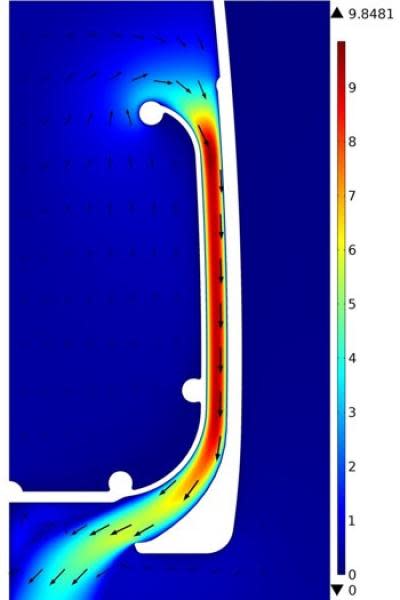Laminar Integrated Port (LIP™) Technology

Laminar Integrated Port (LIP™) allows for precise bass reproduction.
Genelec’s choice for vented (or bass reflex) enclosures dates back to 1978 and the first active monitor developed by Genelec, the S30. Research to improve the performance and efficiency of reflex ports has been pursued ever since.
A typical reflex port enclosure features a tube and an opening area. To avoid turbulences in the tube the air flow should not meet any acute angles as this would generate noise, compression, distortion and losses of the total radiated energy. To minimize the air flow speed, both the tube and its cross section have to be large. Often, the outer enclosure dimensions become a limitation, because a long tube will not fit in the available volume anymore.
The M Series features two vent tubes having opening stretching across half of the enclosure depth to address these specific issues. The novel patent-pending Laminar Integral Port, LIP™, has been flow-optimized using computer-based finite element models to achieve low distortion and high efficiency even at very high audio output levels.

The reflex ports are integrated in the NCE enclosure during the moulding process, avoiding the need for separate additional components. The cross-section plot (Figure) demonstrates the efficient flow characteristics of the port. The natural installation orientation of the M Series is vertical and to allow easy placement of the monitor against a wall, the M Series ports opening face downwards, in the space under the monitor.
The novel Laminar Integrated Port, LIP™, bass reflex system provides accurate low frequency response and faithful tonal reproduction characteristics.
